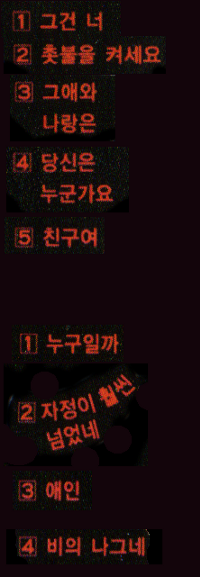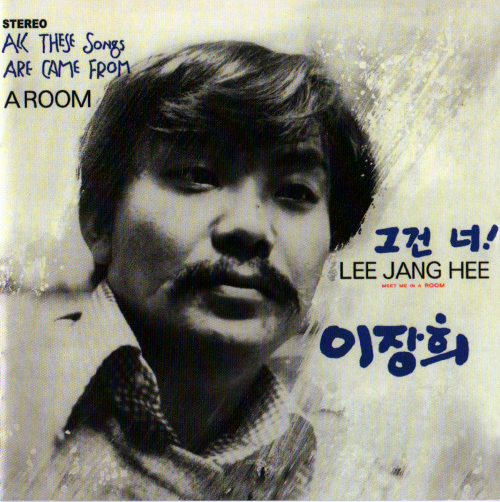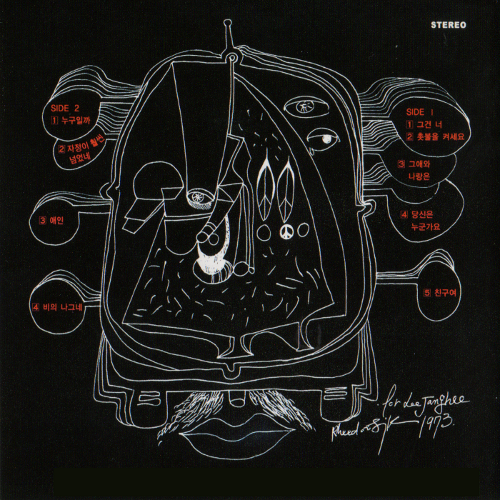

The Side 1 Songs: 1) It's You 2) Light the Candle 3) It Was You and Me 4) Who Are You? 5) My Friend The Side 2 Songs: 1) Guess Who 2) It Is Way Over Midnight 3) Sweetheart 4) Rain Wonderer 
|
 
|
Folk
Music in Korea
On a cat's hairs, soft like pollen Lovely fragrances of spring are flowing In a cat's eyes, round like a golden bell Crazy flames of spring are flowing --from Lee Jang Hee
"Spring is a cat"
Koreans love to sing. One of the things that a foreigner notices is that singing is a much more common and important activity than it is in western countries. Even before the karaoke explosion, Koreans sing at occasions that others would find strange, and many travel guide books warn visitors that they will be expected to perform at public functions. It's difficult for other people to imagine what music existed in Korea before the 1960s. Korea had it's own traditional folk music forms. Some of these forms are still widely enjoyed amongst people who wish to preserve Korea's unique culture. Somewhere along the line too there must have been the blending of popular music (ie the music industry) with that enjoyed as a folk form by the masses who would sing songs at picnics, parties or other gatherings. The student protest movements must have given a huge boost to a 'folk' music as a way to spread its message and bolster enthusiasm at rallies. Although a comparison can be made to the relationship of western protest and folk music movements, this maybe was quite different in Korea. For one thing, although the causes of western protest may have been legitimate, they were never as immediate as the issues of the Korean protest movement. Protesters of the western world were (and are) often seen as being middle class liberals for whom protest was a luxury. In Korea, with frequent periods of martial law, curfews, state of war/brinksmanship, and so on, the issues were the daily life of the citizenry. For that reason, folk music has been a medium or a product of the protest movement rather than a fashion unto itself as it became in the west. From those beginnings folk music developed and merged with pop and rock music. Korean performers who are associated with folk music cover a wide range of styles and provide some of the most genuine music in the contemporary music industry, unhindered by expectations and commercial demands. While Japanese and American-style pop dominated the music scene after the Korean War, some young musicians, playing acoustic guitars, started singing songs about love, nature and freedom. Then two singers, Song Chang-shik and Yoon Hyong-joo, released a historic duet album featuring acoustic guitars, for the first time in Korea. And a hippie named Han Dae-soo, Korea's first singer/songwriter, returned from the United States and held a concert singing a new type of song in 1969. Folk music in Korea was born in that year. The music touched the hearts of young fans and swept the university campuses and concert halls. Along with draft beer and blue jeans, the acoustic guitar became an obsession for youngsters. In the dark age of military rule, students sang folk songs yearning for freedom and democracy. |